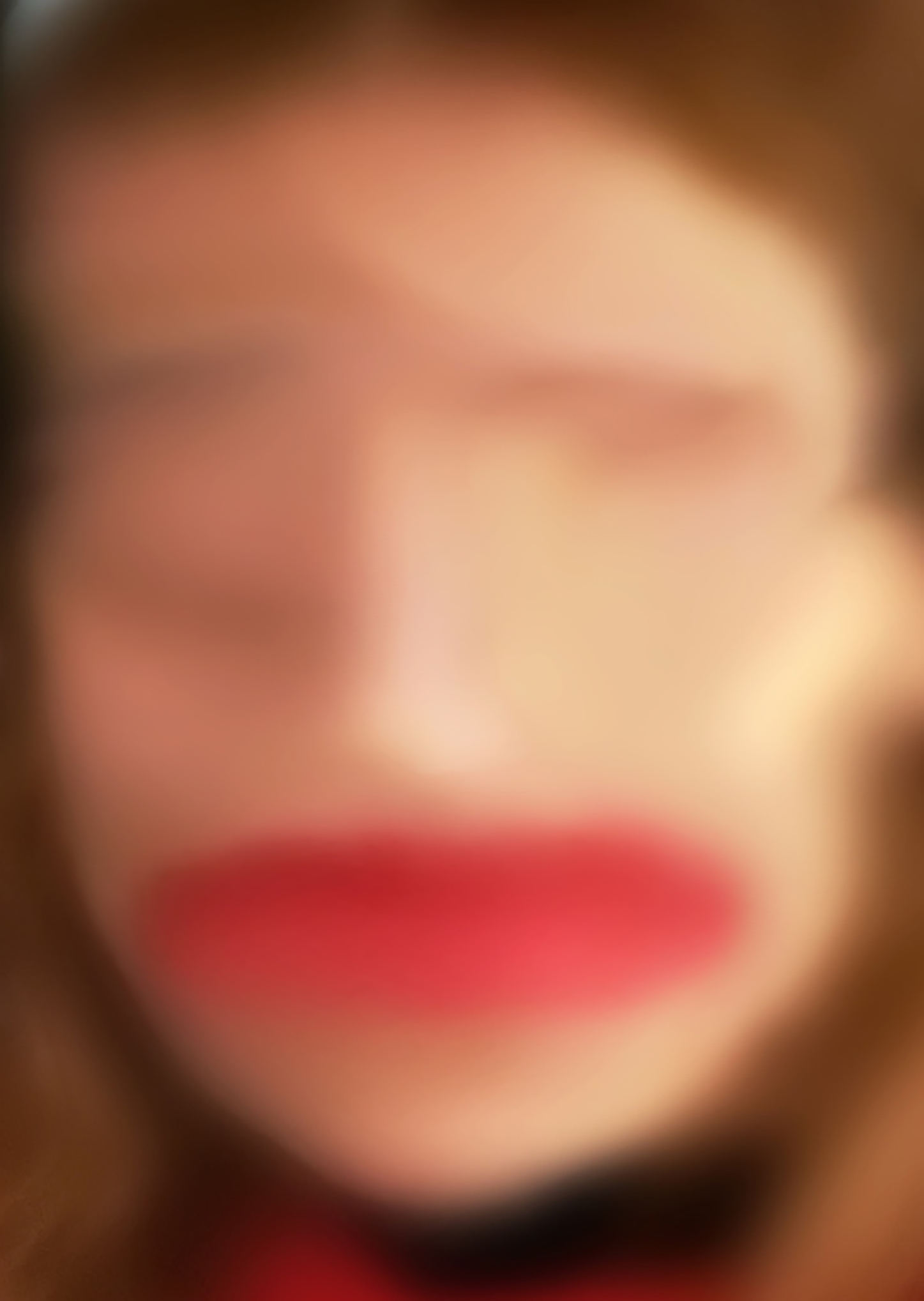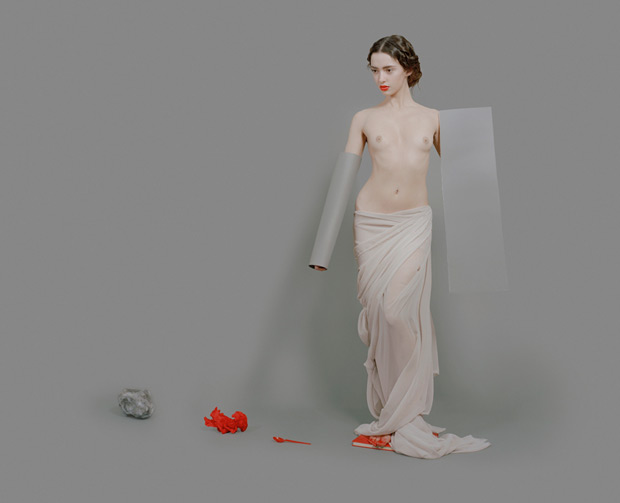Cool Hunting investigates Rachel de Joode’s ‘magic-surreal, inflatable Neo-Dada’ work.
Rachel de Joode: the magic-surreal, inflatable Neo-Dada work of a still life sculptor
By Perrin Drumm
Rachel de Joode is a Berlin-based sculptor who specializes in still lifes made from materials like a stack of Kraft singles, an oozing banana, a wooden club piercing a pile of white bread, wigs, people and a giant inflatable chicken foot. Her most recent work “Life is Very Long” is a part sculpture, part performance piece composed of tennis gravel, styrofoam and 60 frozen Dr. Oetker pizzas. She draws inspiration from history, philosophy, space travel and obscure scientific facts, which may help to explain why she classified the sculpture “A Peanut, Half a Horse, a Chicken Foot, a Burning Cigarette and a Black Hole” as “magic-surreal inflatable neo-dada”. If that doesn’t clear things up, perhaps this explanation will shed some light:
“The elements displayed have individually symbolic meanings: the peanut metaphors evolution, primates and a mental condition, half a wild horse is a metaphor for amputation, restrainment and magic shows (box sawing trick). The burning cigarette is a metaphor for fire (the element), smoke (blurred vision) and the dawning of the end, the chicken foot is a voodoo charm which is symbolically used for the “scratching” of the vision of the future. The black disk is representing a black hole which is a symbol for the mighty unknown. Together these ingredients form an inflatable perspective of the future human condition, revealing the dawning of the end of the post-modern world.”
She continues her exploration of art, science, culture and nature as the photo editor and art director of META Magazine, which “traces the uncommon threads between common topics, presenting its readers with views into the abyss of visual information and with experiments in associative reading,” de Joode explains. “We have contributors such as Olaf Breuning, Tao Lin, Cai Guo-Qiang, Pieter Hugo, Jan Kempenaers and Alan Shapiro among other scientists, historians, artists, activists, occultists and theorists.”
She’s also the co-founder of De Joode & Kamutzki, a new auction house that aims to increase the accessibility of contemporary art. “We don’t see art as a luxury good that one might consider purchasing when they already have everything else that money can buy,” de Joode says. “Our mission is to inspire you to invest in great artwork not for the sake of its resale value, the status symbol attached to it or as a way to spend surplus money. We want people to buy art out of love, fascination and admiration. Because art is essential.”
Her work will be featured in two exhibitions in April: “tropico post – apocalyptic” at extra extra in Philadelphia and “Bad Girls of 2012” at Interstate Projects in NYC. Meanwhile, she’s working on a short film with dancers Jared Gradinger and Angela Schubot before she leaves for a two-month residency at Sculpture Space in Utica, all while Panama-based gallery Diablo Rosso prints an edition of her work for Zona Maco, the contemporary art fair in Mexcio City. I was lucky to catch up with her this week for a quick chat.
You studied time-based arts at the Gerrit Rietveld Academie. What does that mean? What are time-based arts?
It means art which is somehow related or dependent on time—like film, web-based art or performance. Nevertheless, this department is a kind of free art meets conceptual art department. You could basically use every type of media you wanted, the focus was more on your idea, on your concept.
How do you select the materials for your sculptures? Is it an intuitive process or is there a lot of trial and error?
I choose objects which I find iconographic for the current human condition, objects which relate to the everyday, like pizzas, or computers, or coffee mugs, or remote controls. These objects are just “there” somehow. I am not constantly on the lookout. It’s more about opening your eyes. Like when I think of using a telephone in one of my works, all of a sudden I notice all these great telephones everywhere. In the end it’s either/or. Sometimes I have an image in my head and then I need to find a certain object. Sometimes the object comes to me and I get inspired to do something with it.
When I start to assemble an installation or still life I think a lot about the texture and the colors. Colors really work on the emotions and so you can do a lot with this. Mostly I color-code the objects or arrange them tone-on-tone. Setting up a still-life is like making a sculptural collage. It’s cutting and pasting, somehow it’s the same as photoshopping.
I have a table with objects (ingredients) lined up and then I just try to put them together until it works. I never use all the objects that I picked out in front. Then the hardest part is having things sit and stand together. Things always fall over. I scream and condemn the objects. Gravity is my worst enemy when I make an installation!
For “A Peanut, Half a Horse, a Chicken Foot, a Burning Cigarette and a Black Hole,” how did you fabricate the inflatables? Why use inflatable objects as opposed to another sculptural form?
In 2010, I was invited by the Oslo-based artists Sverre Strandberg and Anna Daniell to make an inflatable piece. They organized and curated the show “Giant Ball”, an exhibition of inflatable art pieces held in Oslo’s football stadium.
It was very natural to design this still-life. The piece was produced in Korea. The concept, design and the high-res images I delivered for the print on the inflatable material are mine. The curation and production are Sverre Strandberg and Anna Daniell.
The cool thing about it is that I could make something like “Half a Horse” which would be very hard to make in reality! The sculpture definitely turned out great and it is so small to carry around, which is a big bonus! I just need to built the structure which it stands on.
You’ve said work addresses “the nature of humanity and questions who we are and why we’re here.” Has your work led you closer to answering these questions? What have you discovered about our humanity through your work?
Actually, I think I will never find out. It’s so ridiculous! It is really so ridiculous that we are alive. It confuses me a lot. I guess we need to simply do some funny and nice things, things we want to do and do them right enough to also be able to enjoy them. People are very strange, what they do, how they live, what they want from life. The only realization I made is that we are all very similar. All humans want things, they desire things.
Link to the interview →


